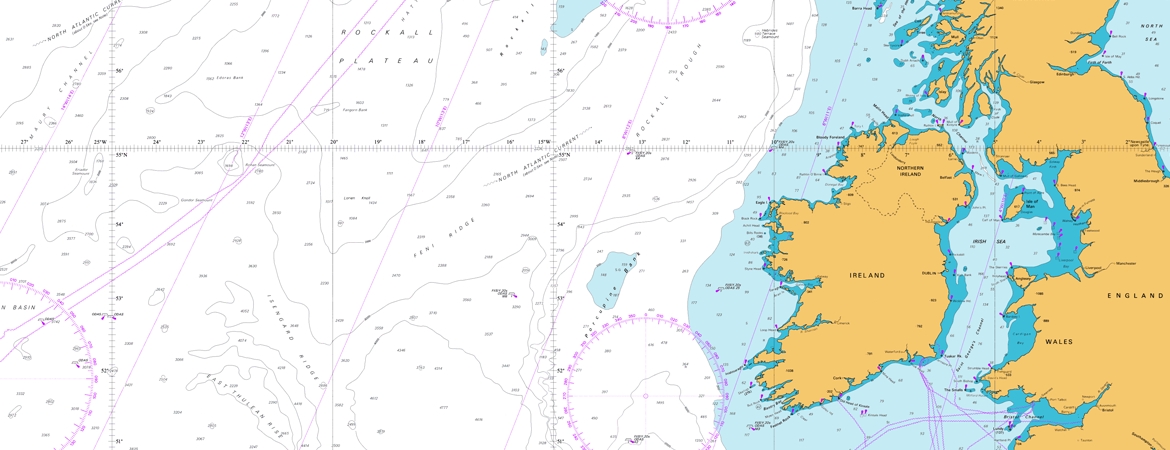
Notices to Mariners
Changes to the General Lighthouse Authorities' Public DGPS Service
04 - 2001
Issue Date: Monday 16 July 2001
Aid:
Area:
The General Lighthouse Authorities of the United Kingdom and the Republic of Ireland: The Commissioners of Irish Lights, Trinity House and the Northern Lighthouse Board are to alter the operating frequencies and some ranges of their trial public Differential Global Positioning System (DGPS) service to meet revised radio frequency allocations throughout the European Maritime Area and to improve coverage.
The service is also to be augmented by providing an additional station in England. Whilst the service continues to operate on a trial basis, it is anticipated that operational status will be declared in due course, on completion of system validation
| 1.DATE: | On or about 29th August, 2001. |
| TORY ISLAND LIGHTHOUSE | Latitude 55° 16'.36N., Longitude 08° 14'.97W. |
| AMENDMENT: | Frequency and range of DGPS station to be revised as follows:- |
| New frequency: | 288.50 kHz |
| New range: |
200 miles.
|
| 2.DATE: | On or about 18th September, 2001. |
| 2.1 AMENDMENT: | New DGPS station to be introduced as follows:- |
| WORMLEIGHTON DGPS STATION |
Latitude 52° 11'.8N., Longitude 01° 21'.9W.
Identification Numbers Reference Station: 691
Transmitting Station: 439
Nominal Range: 172 miles
Integrity Monitoring: Yes
Transmitted message types: 3 6 7 9 16
Frequency: 291 kHz
Bit Rate: 100 bits per second.
| 2.2 AMENDMENT: | Frequency and ranges of DGPS stations to be revised, as follows:- |
| 2.2.1POINT LYNAS LIGHTHOUSE |
Latitude 53° 24'.976N., Longitude 04° 17'.352W. New frequency: 297.5kHz |
| 2.2.2 NASH POINT LIGHTHOUSE |
Latitude 51° 24'.059N, Longitude 03° 33'.134W. New frequency: 309.5kHz |
| 2.2.3 LIZARD LIGHTHOUSE |
Latitude 49° 57'.606N, Longitude 05° 12'.132W. New frequency: 306 kHz |
| 2.2.5 NORTH FORELAND LIGHTHOUSE |
Latitude 51° 22'.494N, Longitude 01° 26'.705E. New frequency: 299.5 kHz |
| 2.2.6 FLAMBOROUGH HEAD LIGHTHOUSE |
Latitude 54° 06'.980N, Longitude 00° 04'.962W. New frequency: 290.5 kHz |
| 2.2.7 GIRDLENESS LIGHTHOUSE |
Latitude 57° 08'.342N., Longitude 02° 02'.914W. New frequency: 297.0 kHz |
| 2.2.8 SUMBURGH HEAD LIGHTHOUSE |
Latitude 59° 51'.246N., Longitude 01° 16'.492W. New frequency: 291.5 kHz New range: 200 miles. |
| 2.2.9 BUTT OF LEWIS LIGHTHOUSE |
Latitude 58° 30'.936N., Longitude 06° 15'.654W. New frequency: 295.5 kHz New range: 200 miles. |
| 2.2.10 LOOP HEAD LIGHTHOUSE |
Latitude 52° 33'.68N., Longitude 09° 55'.96W. New frequency: 293 kHz New range: 150 miles. |
| 2.2.11 MIZEN HEAD LIGHTHOUSE |
Latitude 51° 27'.00N., Longitude 09° 49'.24W. New frequency: 284 kHz New range:150 miles. |
All above positions quoted in WGS84 Datum.
All mariners are advised that
1.The DGPS service is provided primarily for use in monitoring the integrity of GPS and to enable greater accuracy for marine navigation as a secondary feature.
2.DGPS relies inherently on GPS, the operation and characteristics of which are outside the control of the GLAs.
3.All radio navigation systems are susceptible to interference (including jamming) and environmental effects, which can adversely affect their availability.
4.Various DGPS receiver types are available, some of which may not provide appropriate or timely warnings in respect of the system.
5.Validation carried out to date has indicated accuracy within the coverage area is better than 10 metres.
6.The DGPS receiver should be referenced to WGS84 Datum. If the appropriate nautical chart is not referred to WGS84 Datum, then the position shift values denoted on this chart should be applied.
7.Users should contact the suppliers of their receivers for guidance on system installation, as incorrect siting and installation of aerials can cause interference thus leading to a degradation to the coverage, accuracy and availability of the service received by the user.
8.The coverage of the trial service at present may be unreliable at the heads of some of the sea lochs in the west of Scotland. The situation is being monitored carefully and a number of solutions are actively being progressed to address this matter.
The GLAs strongly advise that no single aid to navigation system should be used in isolation and that DGPS users should use all alternative means available to cross-check the information received. Users should also ensure that they have a receiver which gives sufficient warning of the complete loss of the DGPS signal and reversion to GPS.
Reference should also be made to Volume 8 of the Admiralty List of Radio Signals.

